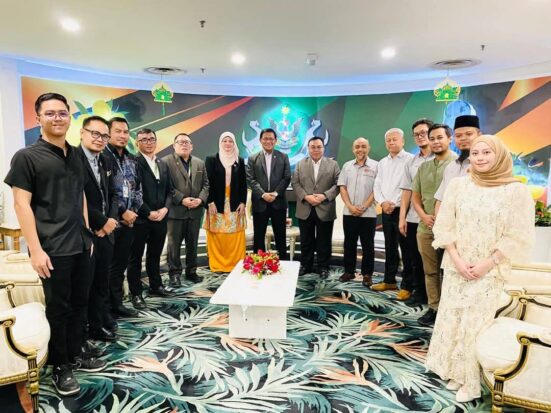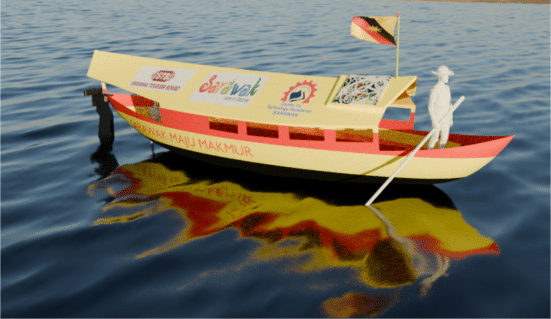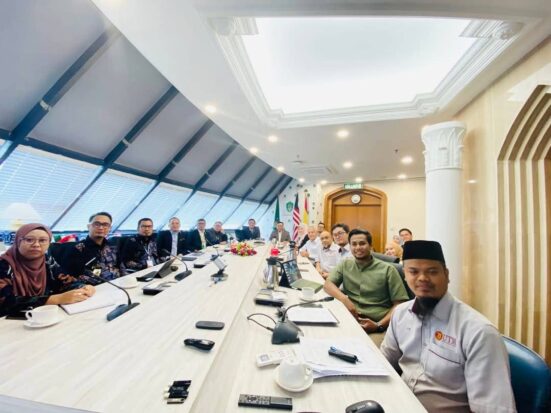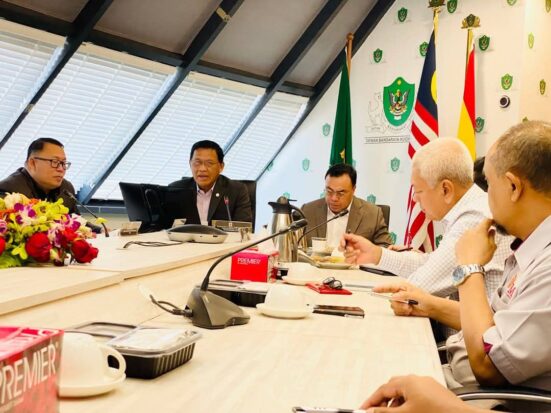KUCHING, Apr 13 – Sarawak is poised to take the lead once again—this time as the regional pioneer in sustainable river transport with the revitalization of its beloved Perahu Tambang. In a high-level meeting at Kuching North City Hall (DBKU) recently, The Honourable Datuk Abdul Rahman Haji Junaidi, Deputy Minister in the Sarawak Premier Department, chaired the presentation for what is set to be one of Sarawak’s most iconic legacy projects: the modernization of Kuching City’s River transport system. This initiative, declared a legacy project for sustainable urbanization during the Malaysia Urban Forum 2023, aims to preserve cultural identity while pushing forward with cutting-edge green technology. Also present with the meeting today, Dato Haji Hilmy Haji Othman, Mayor of North Kuching, Ramzi Abdillah, Director of DBKU and several DBKU Officers.

The project’s direction is clear—Kuching’s penambang boats are making a comeback, not just as nostalgic icons, but as functional, environmentally friendly transport options for locals and tourists. During Kuching City Day 2024, the Premier of Sarawak officially announced that these iconic boats will soon be powered by clean energy, anchoring Sarawak’s role in the regional conversation on sustainable, heritage-driven urban mobility. With this, Sarawak charts a bold new course to be the first in Southeast Asia to elevate traditional boat services into a modern, green-powered river system.

At the heart of this transformation is the full redesign of the Perahu Tambang, which will now be constructed using lightweight and durable Glass Fiber Reinforced Polymer (GFRP). The design was presented by Dr. Nadianatra Musa, Chief Academic Officer of IESG Centre for Technology Excellence Sarawak (CENTEXS), alongside collaborators from Universiti Teknologi Malaysia (UTM) and Universiti Malaysia Terengganu (UMT). These institutions, working in tandem, bring expertise in structural design, electric propulsion, and stability analysis—ensuring that the new boats retain the soul of the old while meeting today’s safety and performance standards.
Key features of the boat include an electric vehicle (EV) propulsion system, improved stability, modern safety exits, and a refined hull based on community interviews and site measurements with the Pak Tambang communities. From the kajang (retractable roof) to the rudder system, no detail is overlooked in ensuring the design remains familiar yet futuristic. As Assoc. Prof. Dr. Shukur Abu Hassan of CENTEXS’ Advisor in advanced composite technology remarked, this project is about more than just boats—it’s about cultural pride and future resilience.
The collaboration includes contributions from Assoc. Prof. Ir. Dr. Junaidi Hamzah on EV integration, Prof. Dr. Mat Uzir Wahit on fabrication processes, and Dr. Ayub Sulong on structural and 3D design. UMT’s Dr. Syed Mohd Saiful Azwan and Ahmad Kamil are leading the boat’s hydrodynamic and heritage-sensitive stability analysis. Together, they form a dream team balancing tradition with modern maritime innovation.
This visionary leap would not be possible without the strong support of local leaders and institutions, including DBKU, UTM, UMT, and the dedicated officers of CENTEXS. As Sarawak embraces green mobility, these perahu will once again glide across the Sarawak River—not just as vessels of transport, but as symbols of a community’s journey toward progress.




